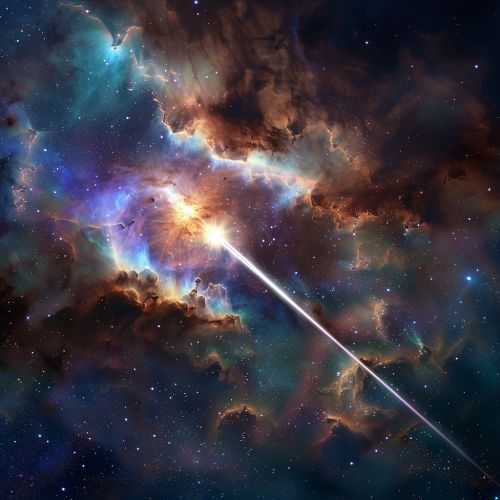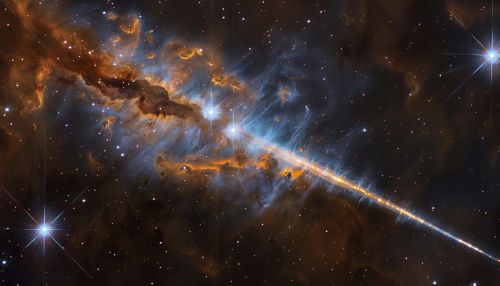Astrophysical Jets
Introduction
Astrophysical jets are highly collimated streams of plasma associated with a number of astronomical objects, including protostars, neutron stars, and black holes. These jets, which can extend over vast distances, are a common phenomenon in the universe, and their study has provided valuable insights into the nature of these celestial bodies and the processes that occur within them.
Formation and Composition
Astrophysical jets are formed when matter falling into a gravitational source, such as a black hole or a young star, is funneled into an accretion disk. The intense gravitational and magnetic forces at work within the disk accelerate this matter to high velocities, resulting in the formation of a jet. The exact mechanisms behind jet formation are still a topic of ongoing research in the field of astrophysics.
The composition of astrophysical jets is primarily plasma, a state of matter consisting of free electrons and ions. This plasma is often composed of ionized hydrogen and helium, although heavier elements may also be present depending on the nature of the accretion disk. The high energy of the jet causes it to emit radiation across a wide range of the electromagnetic spectrum, from radio waves to X-rays.


Characteristics
Astrophysical jets exhibit a number of distinctive characteristics. They are highly collimated, meaning they maintain a narrow shape over large distances. This is thought to be due to the influence of magnetic fields, which constrain the plasma and prevent it from dispersing.
The velocities of astrophysical jets are typically close to the speed of light, a phenomenon known as relativistic speed. This results in significant effects due to special relativity, including time dilation and length contraction. These effects can make the study of astrophysical jets challenging, as observations must be corrected for these relativistic effects.
Another notable characteristic of astrophysical jets is their high luminosity. The energy of the accelerated plasma results in the emission of large amounts of radiation, making these jets some of the brightest objects in the universe. This radiation is emitted across a wide range of the electromagnetic spectrum, and the specific spectrum of a jet can provide valuable information about its composition and energy.
Types of Astrophysical Jets
Astrophysical jets can be associated with a variety of astronomical objects. One of the most common sources of jets are active galactic nuclei (AGN), which are supermassive black holes at the centers of galaxies. These AGN jets can extend for millions of light years and are some of the largest structures in the universe.
Protostellar jets are associated with young stars in the process of formation. These jets are thought to play a crucial role in the star formation process, carrying away excess angular momentum and energy.
Microquasars, or stellar-mass black holes, can also produce jets. These jets are similar in nature to those produced by AGN, but on a much smaller scale. The study of microquasar jets can provide insights into the processes at work in their larger counterparts.
Neutron stars, particularly those in binary systems, can also produce jets. These jets are often associated with periods of intense X-ray emission, known as X-ray binaries.
Observations and Study
Astrophysical jets are observed across a wide range of the electromagnetic spectrum. Radio observations are particularly common, as the synchrotron radiation emitted by the accelerated plasma in the jet is strongest at these wavelengths. However, observations at other wavelengths, including optical, X-ray, and gamma-ray, are also important for understanding the full picture of these jets.
The study of astrophysical jets has provided valuable insights into a number of areas in astrophysics. The formation and evolution of jets can shed light on the processes at work in the accretion disks around black holes and young stars. Observations of jet spectra can provide information about the composition and energy of the jet, as well as the nature of the gravitational source.
Despite the progress made in understanding astrophysical jets, many questions remain. The exact mechanisms of jet formation, collimation, and acceleration are still not fully understood, and are the subject of ongoing research.
